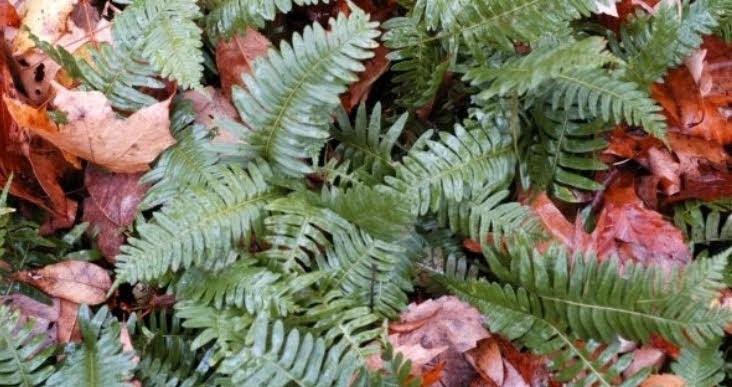
2 minute read
GOINGnative
Christmas Ferns Polystichum acrostichoides
By Barry Glick
It’s time that you heard more about what is most likely the most indestructible fern in the world: the “Christmas Fern.” Known to plant geeks as Polystichum acrostichoides, here’s an evergreen, native fern that can take almost anything you can throw at it. This fern can be found growing naturally in every state east of the Rocky Mountains. I’ll share what my buddy, Dr. Gerald Klingaman of the University of Arkansas, has to say about this durable plant: “The association with Christmas is an old one, for the fronds were once harvested by the tons, baled into bundles, and sold to florists for wreath-making. We no longer rely on evergreen ferns for wreaths. Now we’ve got plastic! “The Christmas Fern grows to about 18 inches tall and wide, with all of the fronds emerging from a central crown. As the plant ages, it produces more fronds, but the usual number is about 20 on the typical plant. Given good growing conditions in the home garden, plants produce many more fronds than you’ll see in the wild. The base of the frond and the central crown is covered with brown scales. “The fronds are pinnately compound, meaning there is a central axis with the individual leaflets (pinnae in fern lingo), produced at right angles down its length. The pinnae are up to 2 inches long, but get proportionally smaller as you move down the midrib. Typical pinnae have a thumb-like lobe at the top, giving them a mitten-like appearance. Some see a Christmas stocking in outline, but they are wrong. It’s a mitten.” About two-thirds of the way down the length of the frond, the pinnae get abruptly smaller. These are the sporebearing pinnae that, on the under-surface, have two rows of spore dots down their length. Under magnification, these sori (the name used by fern experts) produce a number of curled, snail-like cases.
While Christmas Ferns are evergreen, their fronds are not immortal. In early spring, just as new fronds begin to uncurl, the old fronds wither away. There are several other reasons that Polystichum acrostichoides has ended up with the common name of Christmas Fern. One of them is because of its evergreen nature. But my two favorite reasons, that I never miss an opportunity to demonstrate to folks on hikes that I lead, are that when you pull off a single leaflet (pinnae) and hold it horizontally, it looks like Santa standing up on the back of his sled. If you hold it vertically, it resembles a Christmas stocking or what Dr. Klingaman envisions as a mitten. These long-lived plants are so tough that you can transplant them almost any time that the ground isn’t frozen. They are hardy from Zones 3 to 10. They prefer light to full shade, although in most northern states, they can take a lot of sun. The richer the soil, the larger they grow, but I’ve also seen them quite happy in dry, shaley, poor soil. o
Barry Glick, a transplanted Philadelphian, has been residing in Greenbrier County, WV, since 1972. His mountaintop garden and nursery is a mecca for gardeners from virtually every country in the world. He writes and lectures extensively about native plants and Hellebores, his two main specialties, and welcomes visitors with advance notice. He can be reached at barry@sunfarm.com, www.sunfarm.com, or 304.497.2208..








